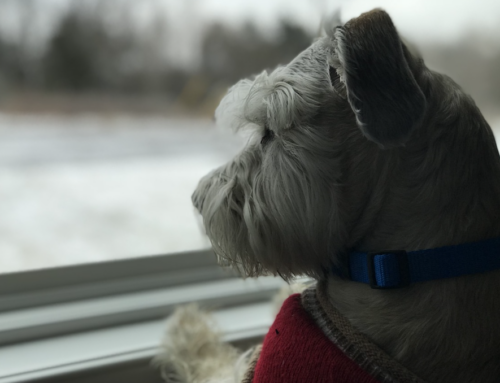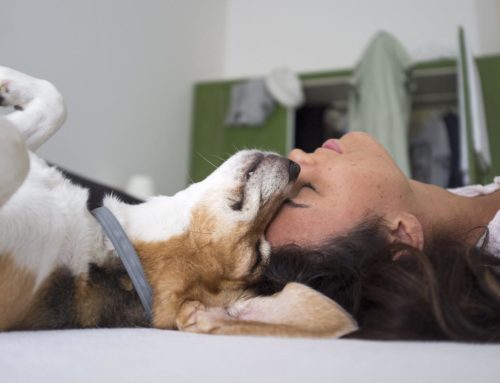
Introducing Your Dog to Your Baby
Having a baby is an exciting time for any parent. You’re touring hospital delivery rooms, setting up the nursery and imagining what this next chapter of your life will entail. Inevitability, it’s going to come with big changes for you and your routine, as well as that of your dog.
As your “first child,” she may be used to getting all of your attention. As a result, you might be worried about how she will respond when that attention is focused on the baby instead. Will they get along? Fortunately, a little preparation can go a long way to ensure that your dog views your child as another member of the wolf pack.
Here’s how to guide the process in the right direction when introducing your dog to your baby:
- Start the new routine now. Dogs, like us, are creatures of habit. If you’ve historically fed your dog at 7 a.m. and 7 p.m. on the dot, he’s going to expect that, even after the baby arrives. However, after the baby arrives, you’ll be multitasking and may need a back-up plan. Consider buying an automatic dog feeder, which disperses the right amount of food at the right time. It also takes that job off your plate completely. (You just have to remember to resupply the food when it’s out.) Additionally, consider which spaces you do or don’t want your dog entering. For example, maybe your dog is used to sleeping on your bed or the couch and you no longer want that to happen when the baby comes home. Start the process now. Consider buying a crate and a soft dog bed that fits inside it. You might then consider crate training so your dog begins to view the crate as a safe haven, not a punishment.
- Join a group training class or hire a private trainer. You want your dog to listen when you ask him to get down, sit or stay. That’s especially important from a safety perspective if you’re holding the baby. Take note of any current concerns you have, such as your dog jumping up on people when they enter a room or non-stop barking when she sees a leaf fall in your front yard. Consider registering for a group training class at your local pet store. One of the first things you’ll learn is that they’re actually training you, not just your dog. It’s more about teaching you what to do in order to get the desired behavior response from your dog.
- Consider hiring a dog walker. Time is often short for new parents (or any parents, for that matter). Anticipating that now can help you prepare. Consider hiring someone to walk your dog at least once a day and having them start before the baby comes. One change at a time — before the baby comes home — will help your dog adjust without feeling like her world got flipped upside down over night. If hiring a dog walker isn’t in the budget, no problem. Consider asking a family member or close friend if they would mind taking your dog to a dog park periodically, at least in the beginning. It’s the perfect answer to the question caring friends or family members always ask after you have a baby, “Is there anything I can do to help?”
- Introduce your dog to the sights, sounds and smells of a baby before they get home. Depending on your dog’s personality, new sights, sounds or smells might make them anxious, especially when introduced all at once. Consider slowly introducing your dog to what it will be like to have your baby at home before it actually happens. That’s when you’ll also have the most time and mental bandwidth to help ease your dog into it, too. You might start by using the same lotion or shampoo on yourself that you plan to use for the baby later. Set up the highchair and bouncer. You might even leave a couple of your baby’s new toys on the floor to help train your dog to leave them alone (just make sure you supervise). If your dog picks one up, redirect her attention toward one of her own toys and praise her when she complies. It’s often hard for dogs to distinguish their own toys from the baby’s toys and it will alleviate a lot of stress if you can teach them now.
- Send family in before you when you bring the baby home. Bringing your baby home for the first time is exciting. Maybe you have family in town for the occasion. Depending on your dog’s personality, he might get overly excited or anxious with all of the commotion. Consider having your guests enter your house first so that your dog can greet them. Designate one person to put her on a leash and have treats prepared. When you come in with the baby, try to maintain a calm demeanor so that your dog will know there’s nothing to worry about. Ask your designated person to cue the dog to “sit” and “lay down” on the ground next to the couch before you sit down with the baby to visit with guests. The helper should give your dog treats for following the commands. If your dog is crate trained and views her crate as a safe space, you could also have the helper take her there if she seems overly excited or anxious.
- Choose a quiet room to introduce the dog to the baby — after guests leave. There’s no pressure to introduce your dog to your baby right away. When you are ready, choose a quiet room and sit in a comfortable chair with a back. Ask a second person to put the dog on her leash and walk her calmly into the room. If your dog seems curious, invite the helper to bring her over to your baby’s feet, while still holding the leash short, but. loose. She might sniff the baby, which is fine, as long as you both still feel comfortable. After a minute or two, ask her to “sit” and “lay down” and give her treats for doing so. You can repeat this process a few times or again on another day.
- Bring up any concerns with a behavior specialist. It can take time for a dog to acclimate to having a new baby at home. However, if you have any concerns, you can always call a behavior expert. There are pet behavior specialists who can meet with you on a video call, from the comfort of your own home. They can help you work through any issues that arise and help you cultivate a bond between the newest member of your family and the oldest one.




